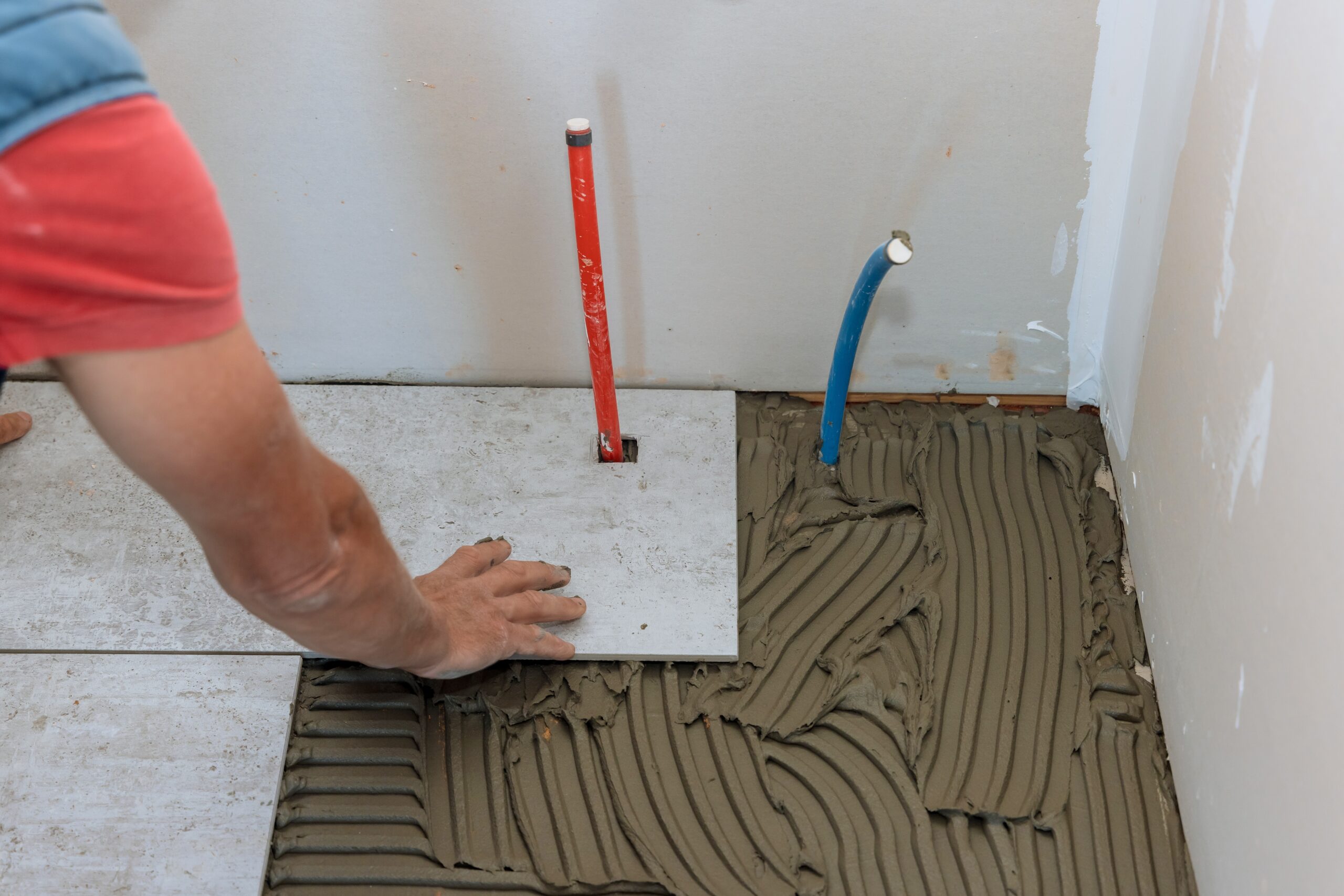Do You Need a Permit for a Bathroom Remodel?
You’re so excited to finally get started on that bathroom update. You have the tile picked out, a new vanity in your online cart, and you’ve spent hours on Pinterest. But then a nagging question pops into your head that stops you in your tracks: do you need a permit for a bathroom remodel?
It’s a question that trips up many homeowners, and the answer can feel confusing. You’re just trying to create a beautiful space, not get tangled in red tape from your local building department. Figuring out the rules for a bathroom renovation feels like one more headache you just don’t need right now.
A lot of people wonder if it’s worth the hassle for their specific bathroom remodeling project. So, how do you know if you can just get started or if you need to make some calls? It all depends on how much you plan to change, because the rules for a simple refresh are very different from a full gut job that requires permits.
The Truth About Bathroom Remodel Permits
The quick answer to whether you need a permit is “it depends.” While that may not be what you want to hear, it’s the honest truth about remodeling permits. The decision ultimately comes down to the scope of your project. The government isn’t really concerned with your choice of paint color or new light fixtures. Its main concern is safety and making sure your home meets basic living standards based on the local code. This means officials pay close attention to anything that affects your home’s structure, plumbing, or electrical systems.
Simple cosmetic updates often get a pass, but bigger changes will almost certainly send you to the permit office. Think of it like this: if you are just swapping out one item for another similar item in the same spot, you are probably fine. But if you start moving things around, you’re crossing into permit territory, and a permit required sign will be in your future.
When a Permit Becomes a Necessity
So what kind of work triggers the need for official approval? It’s anything that changes the bones of your bathroom. Local regulations and specific permit requirements can vary, but these types of jobs almost always require a remodeling permit.
Moving or Adding Plumbing
This is one of the biggest factors in determining your permit requirements. If you plan to move your toilet to the other side of the room, you need a permit. The same goes for relocating a shower drain or running new water lines for a double vanity, which is significant plumbing work. Your home’s plumbing system is a complex network of supply lines, drains, and vents.
According to plumbing codes from the International Association of Plumbing and Mechanical Officials, these systems must be installed correctly to prevent leaks, sewer gas from entering your home, and cross-contamination. An inspector will check that everything is properly connected, sloped, and vented for safety before your bathroom remodeling is complete. Improper plumbing work can lead to disastrous water damage or serious health hazards. That’s why your local building authority wants to see plans and inspect the work involved in your bathroom remodel. Obtaining permits protects you and future owners of your home from these potential issues.
Altering the Electrical System
Just like plumbing, electrical work has serious safety implications. Are you adding a new outlet for an electric toothbrush? Or maybe installing a fancy new light fixture where there wasn’t one before, which constitutes minor electrical work?
If you’re running new wiring, adding circuits, or moving switches, you will need an electrical permit. Faulty electrical work is a leading cause of house fires. An electrical inspector will check that the right kind of wire was used and that your project is legally compliant with all codes.
They check that everything is grounded and that circuits aren’t overloaded, following standards set by organizations like the National Fire Protection Association. Even minor electrical changes can be a huge risk if done improperly. Getting a specific permit and an inspection gives you peace of mind that your bathroom remodel is safe.
Changing the Bathroom’s Layout
Knocking down a wall sounds so simple on home improvement shows. But in reality, moving or removing any wall is a big deal that requires a remodel permit. You need to figure out if the wall is load-bearing, which means it helps support the weight of your house. Removing a load-bearing wall without the proper support can cause serious structural damage to your home, a costly mistake you want to avoid. You will definitely need a permit for this kind of remodeling work. The process will involve submitting plans from an engineer or architect to show how the load from these structural components will be properly redistributed.
Even moving a non-load-bearing wall usually needs a permit because you are still changing the home’s floor plan. You will likely be disturbing electrical wires and maybe even plumbing that’s inside the wall. Proper planning is essential when you want to remodel bathroom layouts.
Expanding the Bathroom’s Footprint
If your remodel involves making the bathroom physically larger, you are definitely going to need one or more bathroom remodel permits. This could mean borrowing space from an adjacent closet or building a small addition. This type of work affects your home’s structure and requires official oversight.
Any time you change the square footage of your home, building officials want to review the plans. They need to see that the new construction is sound and meets all building codes. In some cases, an expansion might even require changes to your home’s exterior, potentially involving roof installation for a small bump-out, which is another reason a permit becomes mandatory.
Updates That Usually Don’t Need a Permit
Now for some good news for those planning a bathroom remodeling project. Not every single thing you do in a bathroom remodel requires a trip to city hall. Many common upgrades are considered cosmetic changes, and you can tackle these without a bathroom remodeling permit.
Here are a few examples of projects that generally don’t require permits:
- Painting the walls a new color.
- Replacing flooring with a similar type of material, like swapping old vinyl for new vinyl plank. A new floor installation is typically fine if the weight is comparable.
- Changing out a faucet or showerhead in the same location.
- Installing a new toilet in the exact same spot without moving the drain.
- Putting in a new vanity and countertop of the same size and in the same place. This involves replacing existing fixtures without altering plumbing or electrical.
- Reglazing a tub or shower surround.
- Replacing an exhaust fan with a newer model, as long as you aren’t changing the wiring or ductwork.
These types of jobs are often considered simple repairs or cosmetic updates. However, the key phrase here is “usually.” Every single town, city, and county has its own set of rules, so a quick check with your local authority is always a good idea to confirm that permits are not needed. For homeowners looking to refresh without major construction, tile refinishing in Philadelphia, PA offers a fast, cost-effective way to transform outdated surfaces, no permit required.
Why You Shouldn’t Skip Getting a Permit
I get it, the permitting process sounds like a pain. It costs money and it adds time to your project schedule. So, what is the big deal if you just quietly do the work without one?
Skipping a required permit might seem like a clever shortcut, but it can create huge problems down the road. It’s a gamble that can cost you way more than the permit fee itself. It’s crucial to understand the potential legal and financial fallout.
Big Fines and Stop-Work Orders
What happens if a neighbor reports you or a city inspector just happens to drive by? They can issue a stop-work order immediately, forcing your project to a halt. You will likely face steep fines for doing unpermitted work, turning a simple project into an expensive headache.
To make things worse, you will still have to get a permit after the fact. This often means tearing out finished walls, your beautiful new tile, or a brand new walk-in shower. An inspector must see the plumbing or electrical work you already did, and you will have to avoid costly repairs to fix the violations.
Major Trouble When You Sell Your Home
This is where unpermitted work really comes back to bite you. When you decide to sell your house, you have to disclose any major renovations. If you did remodeling work without a permit, a potential buyer could back out of the sale or ask for a steep discount. Even if they don’t, their lender’s appraiser might notice the changes and see that no bathroom remodeling permits were pulled. A bank may not want to finance a home with illegal renovations. This could force you to either get a retroactive permit, which is a huge hassle, or sell your home for a much lower price.
Insurance and Safety Problems
Let’s imagine the worst-case scenario. The new wiring you installed without a permit starts a fire. Or the plumbing you moved starts leaking and causes thousands of dollars in water damage during one of your renovation projects. Your homeowner’s insurance company could legally deny your claim. They can argue that the damage was caused by faulty work that didn’t meet code and wasn’t properly inspected. This could leave you responsible for covering all the repair costs out of your own pocket, whether it’s for bathroom remodels or a kitchen remodel.
The Permit Process Demystified
Okay, so you’ve figured out that your big renovation plans do require a permit. The permitting process isn’t as scary as it sounds, especially with good project management. It usually involves these few key steps. First, you’ll need to fill out an application at your local building department. You’ll also have to submit plans for your remodel. For simple jobs, a clear sketch with dimensions might be enough, but for complex projects that require permits, you may need professional drawings.
Many homeowners choose to hire a licensed general contractor to handle this. They know the local regulations and can manage the paperwork for obtaining permits. They will work closely with you and the building department throughout the construction process.
The department will review your plans to see if they meet local building codes. Once approved, you pay the fee and get your permit. This permit needs to be posted somewhere visible on the job site while the work is being done. During the remodel, you’ll need to schedule inspections.
An inspector will visit at key stages, like after the plumbing and electrical are installed but before you put up drywall. This is called a “rough-in” inspection. After all the work is done, they come back for a final inspection to sign off on the completed project.
How Much Will a Bathroom Remodel Permit Cost?
Permit fees are not the same everywhere. They can vary dramatically based on where you live and the value of your renovation. Some towns have flat fees for a specific permit, while others calculate the fee based on a percentage of the total project cost. Generally, you can expect bathroom remodel permits to cost anywhere from $150 to over $1,000. It really depends on the scale of your work. Here is a general idea of what you might pay for your remodeling project.
| Project Scope | Estimated Permit Cost |
| Minor Electrical or Plumbing Only | $50 – $300 |
| Standard Remodel (Moving Fixtures) | $300 – $800 |
| Major Remodel (Moving Walls, Expansion) | $800 – $2,000+ |
These numbers are just an estimate. They are here to give you a ballpark idea of what to expect. Always check with your local jurisdiction for an accurate fee schedule.
Do You Need a Permit for a Bathroom Remodel? Check With Your Local Experts.
Every rule about building permits is local. The best thing you can do before you start your project is to contact your city or county’s building or planning department. It is crucial to get accurate information straight from the source.
Most departments have websites with all the information you need, where you can often find permit applications and fee schedules online. A quick phone call can clear up any questions and save you a lot of trouble. Using resources like the ICC’s code adoption map can help you find information specific to your state and region, as rules in a place like New York City can be very different from those in a smaller town. Some larger municipalities even have a mobile app to help you track your permit’s status. When you consult local authorities, have a clear description of your planned work ready. This will help them give you the most accurate advice on your specific permit requirements.
Ready to Start Your Bathroom Remodel? Get Expert Refinishing Today
So, let’s circle back to that big question: do you need a permit for a bathroom remodel? If you are just making simple, cosmetic swaps like painting or replacing existing fixtures in the same spot, you’re likely in the clear. If your project involves upgrading existing fixtures without altering plumbing or layout, bathtub refinishing in Lehigh Valley, PA can deliver stunning results with minimal hassle. But if your dream bathroom remodeling involves moving walls, relocating plumbing, or changing the electrical setup, then yes, you absolutely need a permit.
While obtaining a permit might seem like just another task on your to-do list, getting the right one protects you. It protects your safety, your investment in your home, and your peace of mind. Following the permit requirements leads to a legally compliant home that you can enjoy without worry.
It is the official stamp of approval that your stunning new bathroom was constructed properly and with longevity in mind. When the time comes, call your local building department to be sure that your project is successful from the ground up. Get in touch with RenewYourBath today to realize your vision through professional refinishing that adds long-lasting value.



